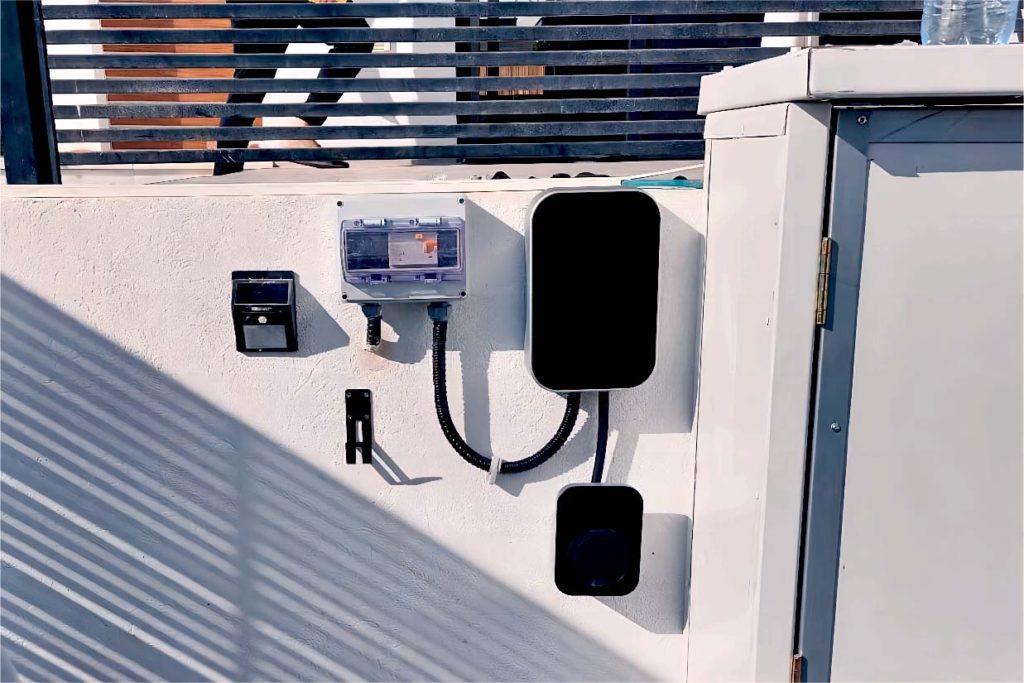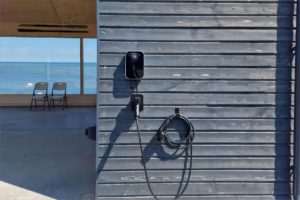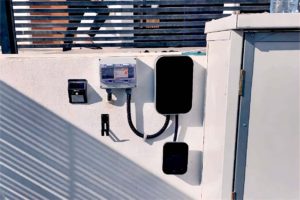Installing an Electric Vehicle (EV) charging station can be a great way to make sure you never run out of charge in your EV. However, it is important to avoid certain mistakes when setting up the charging station. In this article, we’ll discuss five key mistakes to avoid when installing an EV charging station.

Installing Too Few Stations
One of the biggest mistakes people make when installing an EV charging station is not installing enough. It can be tempting to put in as few stations as possible to save money upfront, but if you don’t plan to install additional stations, you could potentially be leaving drivers stranded with no place to charge their vehicles. To ensure all EV drivers are able to access a charging station, it’s best to install more than you need at first so that you have room for growth in the future.
It’s also important to have a charging station that can handle different types of plugs. This way, people with different cars won’t get stuck at the same station and end up waiting for hours for a spot to free up. Additionally, it’ beneficial to have enough stations so that people don’t have to wait in line or circle around the block looking for a vacant charger. Ensuring efficient charging is key – if you install too few stations, then it could mean lengthy waits when trying to refuel an electric car. Having plenty of chargers means people will be able to charge their vehicles while they’re doing other things like shopping or dining.
That’s why it’s so important for businesses to install enough charging stations when selecting EV charge infrastructure. With a diverse range of EV vehicles on the market, companies need to consider installing a few different types of charging stations – preferably with enough space to park multiple vehicles at once. Different public locations, like airports and universities, may also be interested in partnering up with EV charging station companies in order to make their parking lots more attractive and accessible to electric vehicle owners.
Neglecting Evaluation of Incoming Electricity
Before installing your charging station, you should evaluate the incoming electricity to make sure it’s up to code. This means checking the voltage and amperage, as well as making sure that all of the wires, breakers, receptacles, and other components are working properly. You should ensure that you’re working with a certified electrician who can do a proper inspection to make sure everything is up to code and that all components are functioning properly.
Skipping Proper Grounding Installation
While installing a new EV charging station, you should always make sure to ground it properly. If you skip proper grounding installation, you risk exposing yourself and your property to potential hazards. Even if the electricity doesn’t directly touch anyone, they could still receive an electric shock due to faulty wiring or a surge in current. Additionally, it can also cause damage to vital electrical equipment such as air conditioners, refrigerators and computers. Grounding serves to protect people from shock by providing an alternate path for excess current to escape into the ground. That being said, if there is no ground present, then that electrical current can find various other pathways–some of which could be through someone’s body!
Improper grounding can result in significant damage and even injury. To properly install grounding, you need a qualified electrician to connect it to the utility’s main grounding conductor.
A properly installed underground electrode provides extra protection for anyone who may come into contact with an EV charger or the associated wiring. This way you don’t have to worry about shocks due to faulty electricity.
So by taking the extra time and investment to properly ground your EV charging station, you are ultimately protecting yourself, your family and all of the electronic equipment on your property.
So what needs to be done in terms of installation? Make sure to install an 8-foot ground rod adjacent to your charging station and ensure that it is properly grounded, with at least 8AWG copper wire. Furthermore, if the building does not currently include a grounding electrode system (GES), then it’s necessary to also include one for the charging station. This is essential for protection from electric shocks, which can occur during times when there are fault currents in the power supply line. Without a GES, serious electric shock injuries can result from contact between the ground conductor wiring and exposed wires within the EV charger – but proper grounding installation means you don’t have to worry about this!
Failing to Comply With Electrical Codes and Regulations
When having an EV charging station installed, it is imperative to ensure that it adheres to all local and national electrical codes. This includes having the required permits and inspections to make sure everything is up to standard. Moreover, electrical rules are constantly evolving, so make sure your electrician is familiar with the latest regulations so you can avoid potential problems in the future.
Electrics systems and components can generate heat or spark, so it is important to adhere to the regional fire regulations to maintain safety and prevent fires. If your electrician isn’t aware of the necessary rules, then you should contact local authorities for guidance. Failing to comply with electrical codes and regulations can put both your property and life at risk, so make sure that everything is within regulation before using your new charging station.
Once you have ensured compliance, your charging station should be up and running in no time! Depending on the local government, inspections may also be needed to confirm that all the work has been done correctly and has been tested. Always make sure that your charging station is maintained and kept up to date and regularly checked for safety.
Underestimating Your Energy Needs
Installing an EV charging station requires you to properly assess your power needs. There are several types of electric vehicles available and they all have different energy requirements. Thus, it is essential that you know exactly what kind of car you want to charge. This will help determine the size and type of EV charger you need so that your installation process goes smoothly and safely.
This includes analyzing the voltage, amperage and number of connectors needed to charge your car or vehicles as well as the power source you will use for the charging station — either an outlet or a hardwired connection requiring additional equipment. Furthermore, it is important to factor in any expansions that may be needed for future adaptability. Depending on how far out you want to plan for your station upgrades, it may be beneficial to think about future add-ons that can be incorporated into the existing setup such as group charging — an option which allows multiple vehicles with different types of connectors to be charged at the same time by one charger unit.





